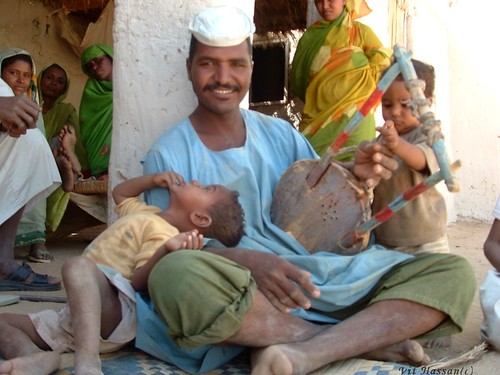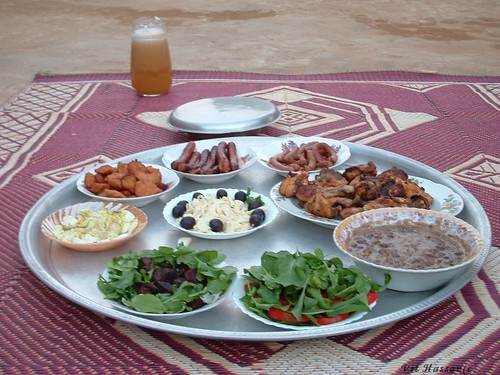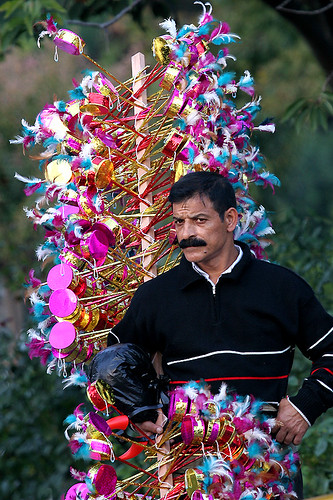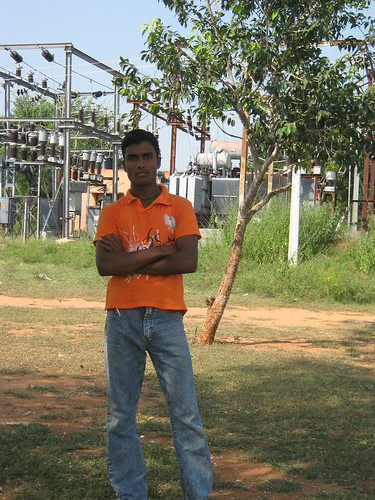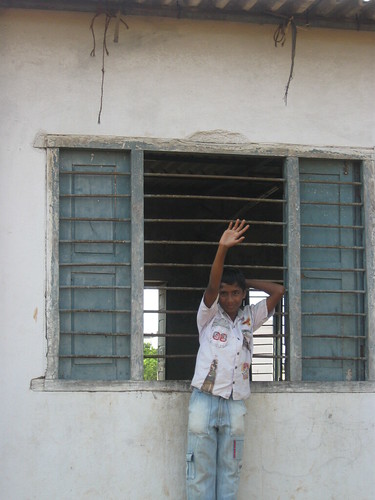Visualize this: you are a bird flying over a land called “Primary Eduction” – the terrain below you is strange, and you think to yourself, “what high hills! what deep valleys!” You also notice large tracts of flat geography that seem to stretch for miles before they abruptly morph into vistas of lumpy hills and curving rivers. End visualization.
This is how I can best depict the schedule we’re wrestling with. In this nation of frequent exams and countless religious holidays, Kara and I find ourselves facing both periods of joyous, continuous class time, and periods of extended school closures (some of which drag on for weeks). We are in a stretch of the latter at the moment, and being the curious people we are, Kara and I decided to use these unexpected hours to work on independent projects, to investigate various additional teaching opportunities, to continue lesson planning, and to explore our current home state, Andhra Pradesh.
Over the past three weeks we’ve managed to adventure to Vijayawada, Amaravathi, Visakhapatnam and the Araku Valley. I am endlessly stunned by the beauty of AP – the unimaginably expansive stretches of rice fields, the soft, dark beaches, the cartoon-esque hills, the breathtaking valleys, the lush green of its agriculture, the artistry and history of its temples and mosques, and most importantly, the kindness of its people. For the most part, Kara and I have traveled as cheaply as possible – sleeping upright on overnight trains, sweating endlessly in the heat of cramped buses and group autos, munching on Rs.10 samosas – and I’ve loved every minute of it. There are an infinite number of things to see and people to talk to and learn from, and I found (as I always do when traveling) that a chance to step outside of my normal routine really helped me to regain a fresh view of things – not just the scenery, but also the economic, social, political, and environmental, issues that constantly swirl through the days, occasionally overlooked . Traveling for 13 hours by rail through fields of crops certainly reminds me to think more critically, more often, about agricultural production and distribution systems, as well as the personal lives of the women and men whose sun-wrinkled faces I see in brief flashes through barred train windows.
Another opportunity that such long train rides provide is enough down time to read a variety of newspapers all from the same day (comparison of news coverage can be revealing – what are the incongruities amongst reports on the same topic? are there any biases apparent? how is information communicated effectively, or ineffectively?) I spent a furious few hours on one train ride reading The Hindu and The Deccan Chronicle from front to back, and I finished with ink smudges on my fingers and a profound sense of sadness. Like any nation, India struggles constantly with an infinite number of entangled issues – intractable political situations, violence, a shifting of blame within the government, complex and ineffective laws, lack of enforcement, security that seems to overstep its bounds, struggles for freedoms; however, the small hurricanes of grief that these issues stir up inside me, are only made more intense by the truly ineffectual and inadequate way in which they are most often reported, analyzed, and investigated (if investigated at all). I am illiterate in Telugu and Hindi, so I have no way of comparing the coverage provided in these papers with that in the English versions, but I can say honestly (as an English major and a critical media consumer) that the daily publications available in Hyderabad often leave me more confused after reading their pages, than I was before I opened them.
One of the most disturbing news trends that I noticed in the papers (which also illustrates my general frustrations with the reporting quality) was that of small, paragraph-long “articles” on the suicides of primary school girls.
From The Hindu:
Schoolgirl ends life
A schoolgirl committed suicide as her mother chided her for neglecting her studies. B. Chamundeswari 12, a 9th class student of Prema Smajam School, was interested in dance. Her mother used to scold her for neglecting her studies. On Wednesday night after her mother went out of the house to meet someone, Chamundeswari hanged herself from the ceiling fan hook at their house. Two Town Police are investigating the case.
The same story, as reported by The Deccan Chronicle:
Minor girl commits suicide
Sept. 23; B. Chamundeshwari Devi, 14, a Class IX student of Prema Samajam School and a resident of Allipuram committed suicide by hanging herself from the ceiling fan in the early hours of Thursday. According to her father Mr B. Suryanarayana Rao, who filed a complaint with the Two Town police station, she could have committed suicide as she was asked to focus on academics, rather than dance by her parents. The Two Town police are investigating.”
Not only was B. Chamundeshwari listed as two different ages (12, and 14,) but The Hindu presents her love of dance and her mothers’ scolding in a way that makes the connection with her suicide seem much more certain than the way in which The Deccan presents it. They both flatten the story and fail to provide any real insight into the life of the subject. This isn’t the worst of the things I read, in terms of language, but it is especially upsetting because I feel so strongly that this poor young girl (and the others like her) deserves the posthumous respect of a proper telling of her story.
Of course, despite sadness, there is happiness present too (sharing, as impossibly as always, the same chaotic space,) and with every story I read of a young student who’s lost hope in creative outlets and a future beyond strict formulas for testing and living, I also have such wonderful examples of opportunities in our classrooms and others for kids to grow and be active participants in their futures. Some of the brightest moments of our travels outside of Hyderabad were the frequent instances in which I could give mini photo lessons to the curious children I met in trains, on buses, and on the street – after even just a few minutes of pointing and miming and (attempts) at explaining with words, the sparks of excitement always began to fly.
Although we (obviously) couldn’t take the girls from Railway and the boys from Nalgonda along with us on our adventures (oh what field trips those would have been!) I’m greatly looking forward to sharing with them all of the images and audio that I documented. In some of the early exercises we did with the students last month, we asked them to write down a few things that they would like to take pictures of, as well as a few things that they’ve never seen a picture of. Many of the girls included the “Araku Valley” and “waterfalls” in their answers (to both questions), and I’m quite pleased that our travels could help us gather these requested images for them (much more meaningful and personal image collection than that which can be done on the internet).
There is much to be shared, but for the sake of brevity (perhaps I’ve already missed my chance at that though, considering the paragraphs above) and a desire not to overwhelm, I present to you now a select sampling of memories from our two short sojourns:
[vimeo 15405990]
(as always, putting multimedia to use wherever possible! audio and images: recorded/photographed by me. song: “Veera” from the new Tamil film “Raavanan”)
Some Images from Vijayawada and Amaravathi (you can visit my own personal flickr for more from associated albums):

We arrived in Vijayawada during the start of Ganesh Chaturthi – the streets were filled with both miniature and gargantuan Ganeshas.


Kara, waiting patiently for Kondapalli Fort to open for entrance.


Auto Exhaust(stion)

A strangely decrepit, colorful park we stumbled upon while wandering the city.

Ganesh, illuminated, during a festive, evening street bazaar.

On the bus to Amaravathi

View from the back of a group auto.

GIANT Buddha Stupa

New friends from the Buddha Stupa

Passing the time on the bus

Undavalli Cave Temple


New friends at a large and joyous family picnic!


